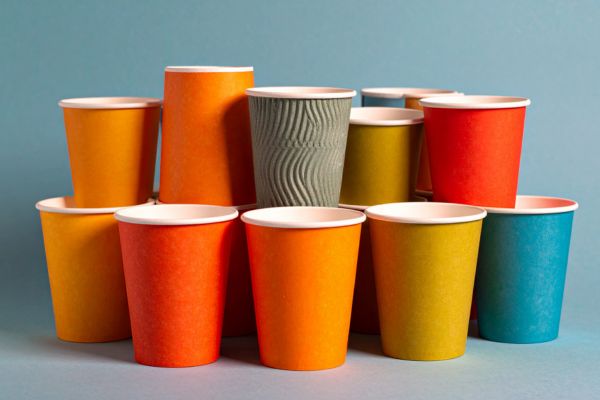Disposable tableware is widely used at different places such as petroleum stations markers cafes coffee points – it is easy to use and easy to replace. Most disposable tableware is made from such materials as:
- paper,
- plastic,
- foam,
- biodegradable composites.
The material composition, environmental profile, insulation properties and user perception of paper cups make them distinct from other disposable cup types. These differences influence their functionality, suitability for particular business models and beverages, and compliance with sustainability standards.
Paper cups are essentially made from renewable cellulose fibres, typically derived from wood pulp. These fibres are formed into a rigid structure and coated with a thin layer of plastic or biopolymer to prevent liquid absorption. This composition gives paper cups a tactile warmth and rigidity that feels more natural than pure plastic. It also allows for easy custom printing and branding — a feature frequently utilised by cafés and beverage companies.
Unlike foam or rigid plastic cups, paper cups provide a smoother surface for detailed graphic design and maintain an appealing aesthetic that aligns with eco-conscious branding.
Functionality
In terms of functionality, paper cups differ in their thermal and tactile behaviour. They do not retain heat as well as foam cups, but modern variants with double-wall or corrugated designs provide effective insulation for hot drinks, eliminating the need for external sleeves. In contrast, plastic cups are better suited to cold drinks as they can soften or deform when filled with hot liquids. The fibrous structure of paper makes it more comfortable to hold and less slippery, improving handling for both hot and cold drinks.
Environmental distinction
Paper cups are often perceived as more sustainable because their main component, paperboard, is biodegradable and comes from renewable sources. However, the polyethylene (PE) inner lining of traditional paper cups hinders their full recyclability. In response to this, new production methods use water- or plant-based coatings, such as polylactic acid (PLA), to make paper cups compostable and easier to recycle.
By contrast, foam cups are made of expanded polystyrene (EPS), a material that is difficult to recycle and is increasingly being restricted by environmental regulations. Plastic cups are usually made of PET or polypropylene and can be recycled, but they rely on a fossil-based supply chain and require specialised sorting facilities.
Versatility
Paper cups can be used for both hot and cold beverages, printed with logos and stacked efficiently for storage.
Foam cups insulate well, but they are bulky and less visually appealing. Plastic cups are durable and transparent, but are less eco-friendly and are often associated with single-use waste.
Consumer perception
Paper cups strike a balance between practicality and sustainability. Their natural texture, potential for recycling, and customisable design make them popular in modern cafés, offices, and events that want to demonstrate environmental awareness while maintaining convenience. Thus, paper cups distinguish themselves as a compromise between functionality, cost-effectiveness, and ecological responsibility.
